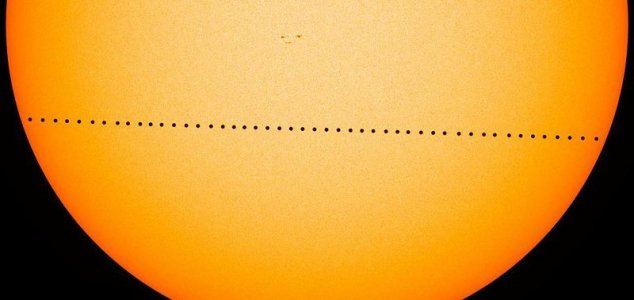
One of the biggest astronomy events of the year is just hours away. On Monday, Nov 11th, Mercury will pass directly in front the sun. The transit begins at 12:35 UT (7:35 am EST) and lasts for almost six hours. The tiny black form of Mercury is easy to see using a telescope to project an image of the sun onto a screen or other safely-filtered optics. Mercury won't make another transit until 2032, but that will not be visible from North America. The next transit of Mercury visible from the United States will be on May 7, 2049. SAFETY WARNING Do not combine solar viewing/eclipse glasses with binoculars! You can severely damage your eyes! A safe way to view a magnified image of the sun is the projection method. Any telescope with a stabilizing tripod can be used to project an image of the sun onto a wall, screen or sidewalk. It’s perfectly safe as long as you don’t look into the eyepiece. Binoculars work, too, with the same precaution. Or, just stare at your computer screen! Transit of Mercury webcasts: (1) Royal Observatory Greenwich, UK on Facebook; (2) Timeanddate.com from Stavanger, Norway; (3) Griffiths Observatory TV from Los Angeles NASA's Solar Dynamics Observatory (SDO) will be uploading "almost-live" imagery from its unique vantage point in space. Clear Skies Everyone!
https://youtu.be/zAUdxcX9aVg






 Sat Mar 23, 2024 11:33 pm by globalturbo
Sat Mar 23, 2024 11:33 pm by globalturbo

